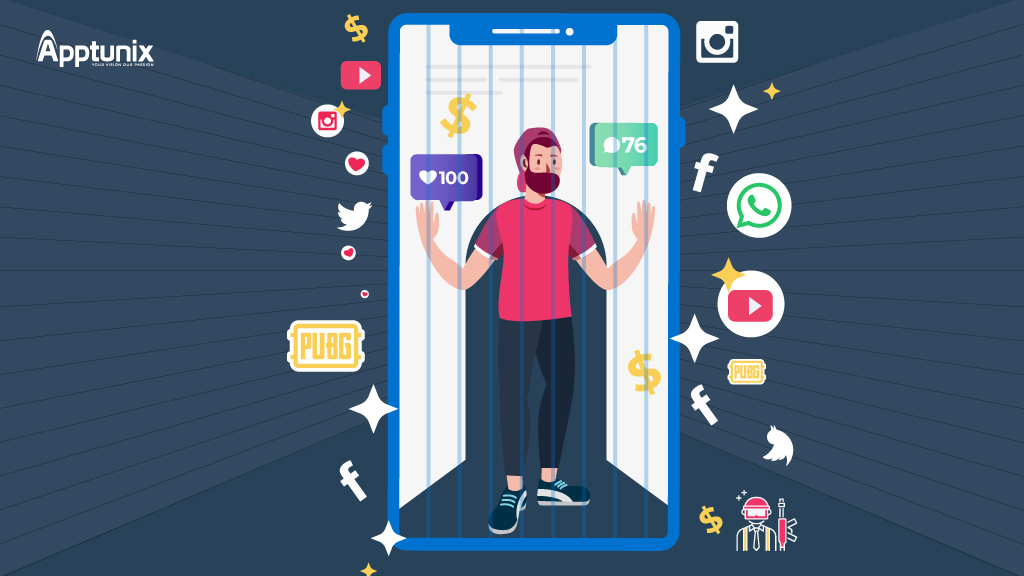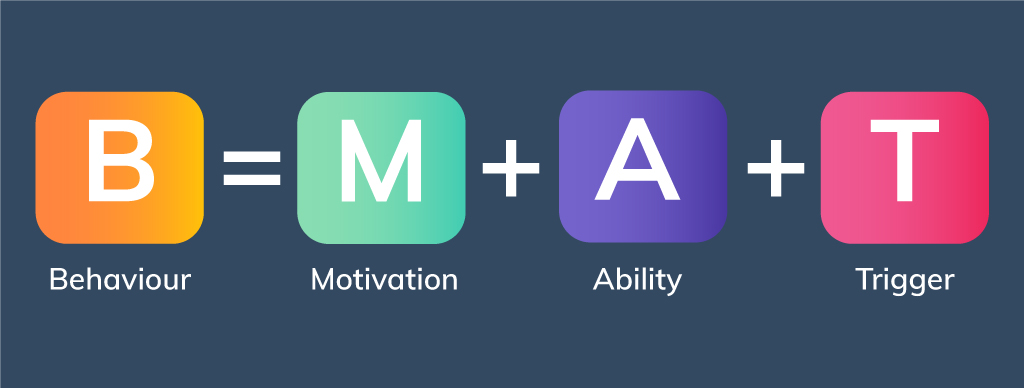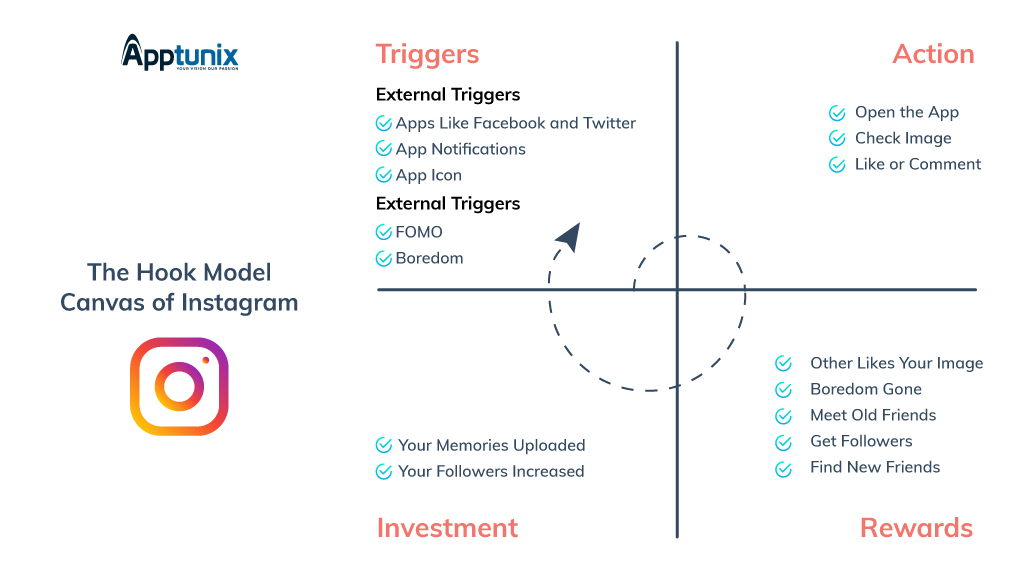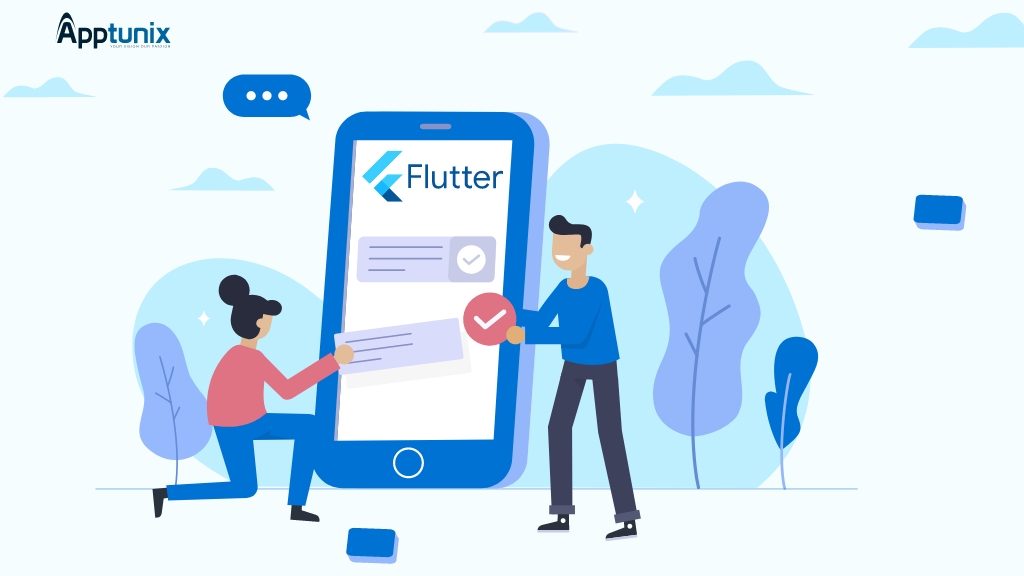Don't miss the chance to work with top 1% of developers.
Sign Up Now and Get FREE CTO-level Consultation.
Confused about your business model?
Request a FREE Business Plan.
How to Develop Habit Forming Apps Using the Hooked Model?
Table of contents

Do you know what is common between Instagram, Alcohol, and Gambling? All are addictive!
While we can easily figure out why Alcohol and Gambling are addictive – it’s natural, of course. But, what do apps like Instagram have that keep the users hooked? In-built cocaine?
The answer is – NO. Behind every screen on your phone, there are literally a thousand innovations created for making these apps addictive.
App churn rate was a huge problem and it still is for mobile app owners as well as developers. And, its solution is a pinch of addictiveness in your mobile app.
To nail that much-desired funding round for your app, to get your stock price up in the market, to increase the amount of time people spend on your application – you don’t just need to acquire new app users – you will also have to retain the existing ones. And, the best way to do it is by using the hook model. Now, what’s that?
Let’s find out.
What Is Hook Model: A RoadMap to Develop Habit-Forming Apps
Nir Eyal, the writer who stirred up Silicon Valley with his book on “How to Build Habit-Forming Products using the Hook Model” has created a roadmap for people who want to develop a product that users can’t resist using all the time.
The model depicts that there are four elements named as Trigger, Action, Reward and Investment which run around and together to make an app or product habit-forming. Thus, making an app a viral one in the app store.
Let’s see how these four elements work and how you can use them:

1. Trigger
What compels the users to use your application? That sparkle or unexpected desire to get your phone and snap on the app’s icon is known as a trigger. Triggers are of two types: external and internal.
a) External Triggers
This kind of trigger focuses on targeting our senses: we can see, touch or hear them. The examples of external triggers include notifications, emails or the vibration your phone makes when you get a new message in your inbox.
As per Nir Eyal:

The external triggers provide information to users regarding what they need to do next, whether they need to sign up in an app or have to reply to a message by one of their friends. A few external triggers directly say “open this email since you received a new message!”
To increase your app open rate and mobile app engagement rate, you can make use of these external triggers. For example, you can use catchy phrases in your push notifications to draw the user’s attention or you can show users important updates regarding their profile in an engaging way.
To understand the concept, let’s take Facebook as an example – one of the most addictive social media applications on the planet.
Here are some of the external triggers that it uses to keep the users hooked:
Notifications: Facebook notifications work as external triggers. Whenever a user sees a notification, he gets excited to find out how people are talking to him and about him.
He/She immediately opens the app to check the same. That’s how the purpose of increasing the mobile app engagement rate/open rate is being served using the hook model in Facebook app.
Other Websites: Nowadays, there are numerous websites and apps that provide users an option to register or log-in using Facebook. This functionality also acts as an external trigger for users who don’t check Facebook often but, because of the ease of registering using Facebook – they will open the app – at least once.
Chat: Another important external trigger that Facebook has to retain its users is its Chat feature. It allows users to interact and allow them to send external triggers to each other – another reason behind Facebook’s immense popularity.
Also Read: How to Increase Mobile App Engagement using Mobile Push Notifications?
b) Internal Triggers
These triggers are the reasons behind why the app is developed, for example, they define the real need of the app – the purpose of why it is developed. For instance, some of the applications can serve as a solution to the user’s boredom – gaming apps, social media apps, and video streaming apps generally fall in this category.
Then there are apps that are specially designed to increase the user’s productivity, for example, Slack. Other types of apps may include Uber, Zomato or Airbnb – that are developed to solve a problem. So, these reasons serve as internal triggers for the users.
As per Nir Eyal:

For example, we can again take Facebook. We may not understand it, but upon further reflection, we intuitively go to Facebook when we’re bored or lonely and want to connect with our loved ones here and there. Using Facebook at this time provides relief and helps us spare our free time happily.
Here is the difference between External and Internal Triggers:

Both types of triggers affect each other. For example, a user comes across a beautiful dress in an ad on Facebook which is an external trigger, which will then create an internal trigger that will compel the user to purchase that dress.
Here, a simple advertisement, which is an external trigger, is directly compelling the user to purchase, which is our inner trigger.
2. Action
After users get a “trigger,” they should feel forced to take an “action” which is a combination of various things as shown mathematically in the image:

The action completely relies on the user’s motivation and ability. When the user’s “Desire” to make a move comes in a state of harmony with their “Ability” to do as such, it brings you one bit nearer to the acknowledgment that you have built up an addictive application. Let’s take a simple real-life scenario to understand the same:
Let’s assume that you are feeling exhausted and are signed in to some social media application.
Now the internet connection out of nowhere turns out to be slow and the application can’t show the content. Here, despite the fact that the motivation for utilizing the application is really high but the ability to keep using the application is low.
Next, imagine you open an app that is having news. You are able to read the articles and are even ready to share the ones you like with your companions.
Just by a solitary tap on the Facebook Share button, you are done with the sharing. Here, both the motivation and the ability to complete an action were available.
To create addictive applications that blend ability with motivation, guarantee that your application has hooks to help keep all the users invested.
So, what can you do to hit the ability and motivation of your users at the same time?
You can do this by adding features in your app that work well even when the internet is slow. Make your app light so that it can load in a split second. You should plan your app in such a way that users can use it even when conditions are not favorable.
3. Reward
For doing even the easiest of the activity inside the application, the users must be rewarded. The reward can be anything – special attention, perks, discount coupon codes or appreciation.
Here is an example to explain the point:
Let’s suppose you are having a good time using a game application and after reaching the 50th level, you get a notification. It says that you are the top fifth player of that round. You soon begin seeing nice comments about you in your notification bar and you get 5 additional lives to use in the game.
The game here is offering you rewards in the form of extra lives and attention that you are getting from other app users. It will boost your confidence and will let you stick to the app for longer.
To develop such an app that gives your users confidence and motivation to keep using your app, you can take help of gamification. You can give rewards to users of your app in any form. The rewards can be:
- A cashback
- Free access to product/content
- User’s Name listed in the list of top players
Depending on your app type, you can research and select what reward you can offer to users to keep them hooked inside your application. By giving users the right type of reward, a number of brands experienced success. Here are the examples:
Example 1: McDonald’s saw success with this method, driving application installs by offering a complimentary sandwich as a reward. The desire of getting a free sandwich successfully helped the motivation of the individuals who in any case probably won’t have downloaded the application.
Example 2: Rewards can also be applied to increase mobile app engagement. Starbucks worked admirably by rewarding users that have their mobile application installed—and it’s no big surprise that it has seen wonderful results by doing the same.
The Starbucks app has been downloaded more than 10 million times. It’s easy—the more coffee you purchase, the more rewards you get and the more you fill your cup.
Users get motivated by the visual part of filling the cup and reaching the highest level of earning.
4. Investment
When the users get hooked on an application, they begin investing. The amount of investment users make depends on their reaction towards the hook.
A great mix of external and internal triggers, motivation and ability together make Habit Forming Apps.
Hooks are basically the features that keep your users returning to your application. They can be anything – like mentions on Twitter, likes/comments on Facebook, pictures on Snapchat or live stories on Instagram.
Great hooks always work in your favor, regardless of the intent -because of which users are engaged with the application.
So now that we are well aware of how the user’s psychology functions and what features your application must have, to keep the users hooked with it, let us now move ahead and see the examples of popular apps that are using the hook model.
Hook Model Examples: How Popular Apps Keep Users Hooked?
The following examples explain how popular apps are following the hooked model to be the best habit forming apps.

Along with “Rewards” and “Triggers” found on Facebook, what makes Instagram so convincing is the yearning to be like individuals we see. We follow the profiles of people we need to imitate, and then we put our efforts into becoming them.
The desire to live a delightful Instagram life and to share it online with friends is a craving that keeps you clicking and using Instagram several hours in a day.
And, those carefully clicked and perfectly edited pictures alongside the comments of your friends then become your investment into the app for future.
Also Read: How Much Does It Cost to Make Photo Sharing Apps Like Instagram?
- PUBG
One of the best hook model examples is also one of the most downloaded apps of 2019. Yes, I am talking about PUBG. It keeps users hooked to such an extent that they can’t resist themselves from playing the game. But, how does the app manage to do this?
Imagine you’re scrolling your phone and you see an ad of the game or one of your friends who is addicted to PUBG tells you about it, and suddenly you feel like you should play it (It’s a Trigger). The app’s popularity and paid advertisement is acting as a trigger here.
Influenced by these triggers, you download the app and start playing the game. (That’s the Action)
You recall how well you played and feel like you should play continuously. Thus, you click on the app icon. You see that the app is giving you Rewards from your last win and you get more excited. (Reward)
This makes you immensely happy with a sense of achievement which in turn makes you even more excited. You again play the game and make good scores. (This is your investment) This loop continues and the user becomes hooked with the game – PUBG.
Now that we have seen how popular Habit Forming Apps are using the Hook model, let’s find the answer to our main concern, that is:
How to Develop Habit Forming Apps Based On Hooked Model?
To summarize the Hook Model and analyze whether your application product or idea has the capability of becoming an addictive or habit-forming app, you should ask yourself these five questions:
- What Does the User Actually Want?
- What will Force the Users to Use Your App?
- With the Desire of Reward, What Actions Can Users Take?
- What Rewards Will You Offer that Will Leave Your Users Wanting More?
- What “Bit of Work” is Done to Increase the Likelihood of Returning?
Once you find the answers to these questions, get in touch with a mobile app development company and start building your addictive app to get the best returns.
Although the framework, tools, and languages that go into the development of an addictive application are in no way different than what goes in the development of apps that get uninstall after some time, what makes the difference is the development process that is followed or the overall app idea.
If you have an application idea that you know users will become addicted to, contact our team of expert mobile app developers and use the mind behind renowned apps on app stores to develop yours.
Rate this article!
(20 ratings, average: 4.60 out of 5)
Join 60,000+ Subscribers
Get the weekly updates on the newest brand stories, business models and technology right in your inbox.

Humane yet subtle, Naiya is a girl full of ideas about almost everything. After earning a bachelor’s degree in computer science and engineering, she decided to merge her technical knowledge with her passion for writing – to accomplish something interesting with the fusion. Her write-ups are usually based on technology, mobile apps, and mobile development platforms to help people utilize the mobile world in an efficient way. Besides writing, you can find her making dance videos on Bollywood songs in a corner.

App Monetization Strategies: How to Make Money From an App?
Your app can draw revenue in many ways. All you need to figure out is suitable strategies that best fit your content, your audience, and your needs. This eGuide will put light on the same.
Download Now!Subscribe to Unlock
Exclusive Business
Insights!
And we will send you a FREE eBook on 'Mastering Business Intelligence.

















